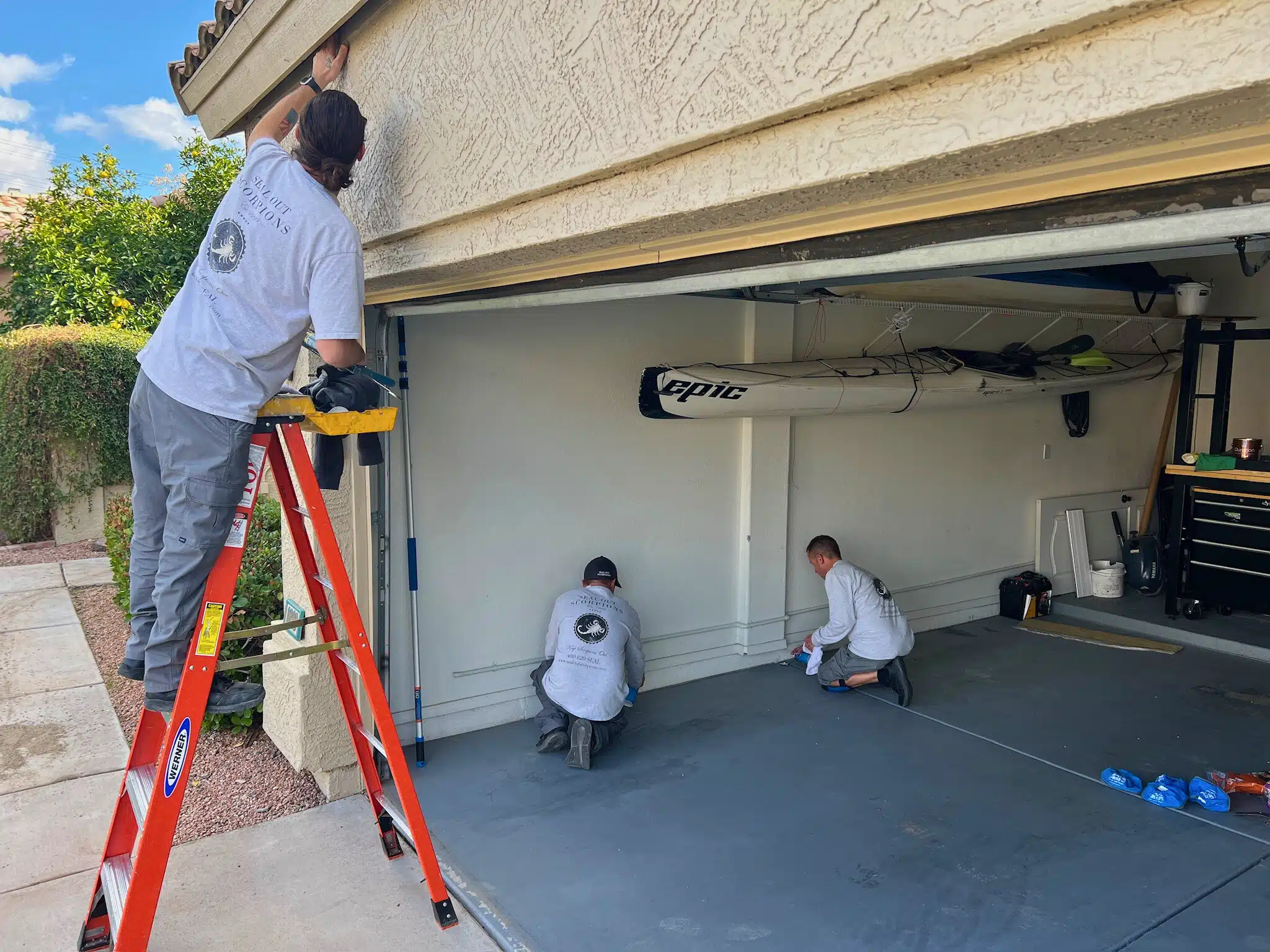Why Builders Sealed For Structure & Aesthetics, Not For Scorpion & General Pest Control Entry
Your home was built to code, built with craftsmanship, and built to look beautiful.
But when it comes to keeping scorpions, crickets, ants, and rodents out, even the best new builds, remodels, and established homes are not protected.
That’s not because your builder missed something, it’s because they were never supposed to.
Builders seal for structure and aesthetics, not for pest-level entry control.
1. Builders Focus On Macro Performance, Not Micro Entry
Your builder sealed where required: around framing joints, windows, roofing, and doors. They used the correct materials and followed code.
But codes don’t address the hundreds of small, invisible gaps that allow pests to follow airflow into your home. These are micro-pathways, the drywall cutouts, slab-to-wall seams, baseboard transitions, utility penetrations, and fixture gaps that are not structural, not visible, and not anyone’s assigned trade.
These are not construction flaws, they’re the unsealed spaces between trades.
2. Every Trade Has Its Job, and None Are Responsible for The Whole Pest Barrier
- The HVAC contractor installs ducts and returns, not air-sealing drywall seams.
- The plumber runs pipes, not micro-seals behind escutcheon plates.
- The electrician wires outlets, not seals, the drywall cutouts around boxes.
- The drywall and trim crews make everything look seamless, not airtight.
- The cabinet installer installs cabinets – not ensuring the base and drywall are sealed.
- The termite specialist treats soil or installs barriers as mandated by code because termites damage structures.
But no code or construction standard exists for sealing out non-structural pests like scorpions, crickets, ants, or rodents.
Builders are rightly trained and licensed to deliver safe, strong, beautiful structures, but not to master airflow physics, sealant chemistry, material expansion and contraction, or pest biology at a micro level.
Even the most experienced builder cannot oversee the chemistry of sealants, the environmental dynamics of home materials under heat and humidity, or the behavioral patterns of pests that exploit air currents. That’s not their discipline, and it shouldn’t be.
3. Why Pest Control Companies Don’t Solve It Either
Pest control companies are trained to manage infestations, not to engineer barrier integrity.
They typically spray, bait, or foam visible entry points without understanding building performance, airflow pressure zones, or how materials expand and separate under stress.
In Arizona, most pest technicians are not certified in Integrated Pest Management (IPM) or Building Science, two disciplines essential to designing a sustainable pest barrier. The result? Partial relief at best, not long-term protection.
4. Building Performance Sealing™, The Missing Trade Layer
Building Performance Sealing™ (BPS) bridges the gap between construction and pest control.
It’s the science-based discipline that addresses the unfilled gap between trades by integrating:
- Building Science & Airflow Physics
- Sealant Chemistry & Material Dynamics
- Environmental Expansion and Contraction
- Integrated Pest Management (IPM)
- Pest Behavior & Habitat Patterns
- Weatherization & Home Performance
BPS professionals don’t just caulk cracks, they engineer environmental control.
Every seal is chosen and placed to maintain balance between breathability, airflow, comfort, and pest resistance.
5. The Pest Barrier Integrity System™
To evaluate and strengthen this connection between your home, its environment, and pest pathways, we developed the Pest Barrier Integrity System™, a six-pillar diagnostic and solution model that measures how your home performs as a complete barrier, not a collection of disconnected parts.
Each pillar examines a critical area of interaction:
- 1. Neighborhood & Environmental Factors: how nearby landscapes, irrigation, and construction influence pest migration.
- 2. Structure & Landscape Interaction: how walls, planters, and vegetation create pest bridges.
- 3. Building Performance Sealing™ (Micro-Weatherization): the unseen airflow breaches and micro-entry points contractors and pest companies overlook.
- 4. Door Systems & Weather Stripping Integrity: where pressure resistance and design gaps allow pest ingress.
- 5. Integrated Pest Management (IPM) Performance: how product strategy aligns (or conflicts) with the home’s physical design.
- 6. Human Factor: daily habits, lighting, pets, and storage that impact the pest ecosystem around your home.
Together, these six pillars determine your home’s Pest Barrier Integrity Index™ (PBII), a measurable score of how well your structure protects against pest intrusion.
6. The Truth Builders Can Appreciate
This isn’t about blaming builders, it’s about defining boundaries.
Builders perform macro work and deliver aesthetics; Micro-Weatherization for pest control is another science entirely.
No general contractor should be expected to study airflow physics, sealant chemistry, and scorpion behavior. It’s a specialized trade that completes what they started.
The builder builds the home.
Building Performance Sealing™ protects it against pests.
Protect Your Home Scientifically
Your home may be beautiful, functional, and rated energy-efficient, but it’s not sealed for pest integrity.
If you live in Arizona or any high-pressure pest region, you may want to consider a Pest Barrier Integrity Audit™ conducted by a certified Building Analyst and Envelope Professional skilled in Building Performance Sealing™ and Integrated Pest Management.
It’s the only way to scientifically measure and close the micro-gaps that invite scorpions and other pests into your home, for good.
Seal Out Scorpions.
Protect your home scientifically.
About Seal Out Scorpions®
Seal Out Scorpions is led by Georgia A. Clubb, Advanced Scorpion Specialist, together with William L. Clubb and Michael C. Golleher — Certified Building Analysts and Envelope Professionals through the Building Performance Institute, with additional Building Science Certificates and studies in Urban & Industrial IPM through Purdue University. Their team includes licensed pest management and sealing specialists who pioneered Building Performance Sealing to solve scorpion problems at the structural level.

















